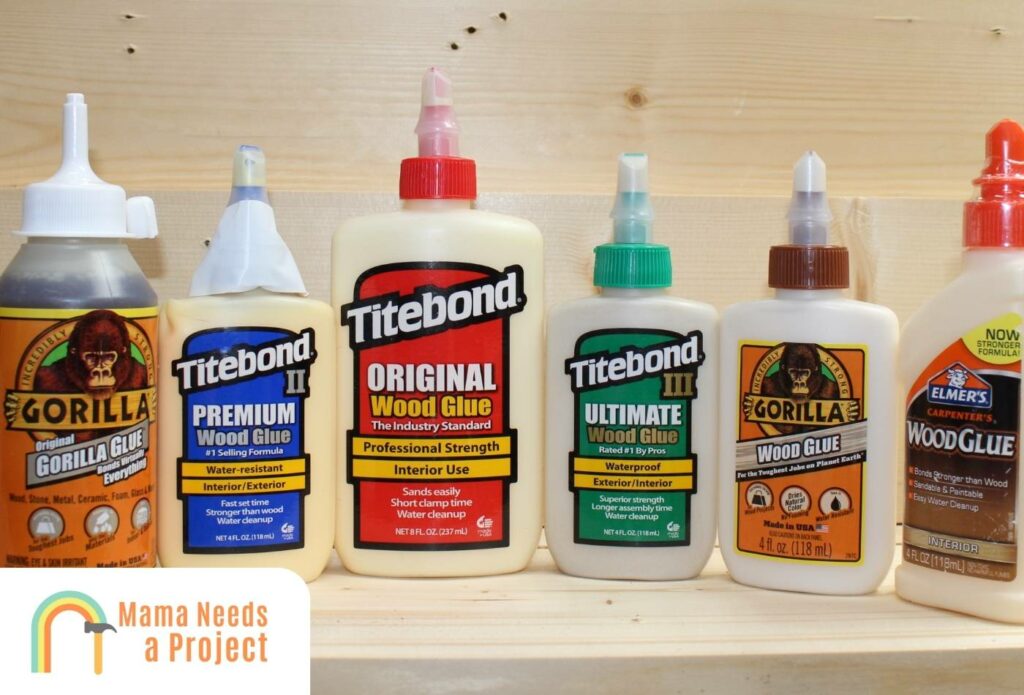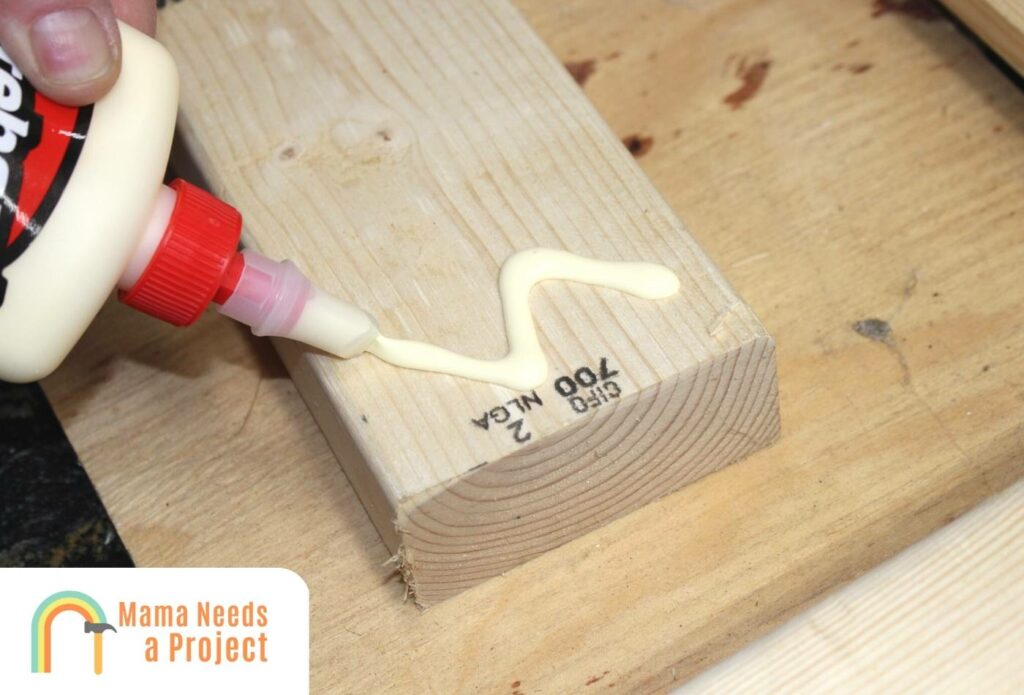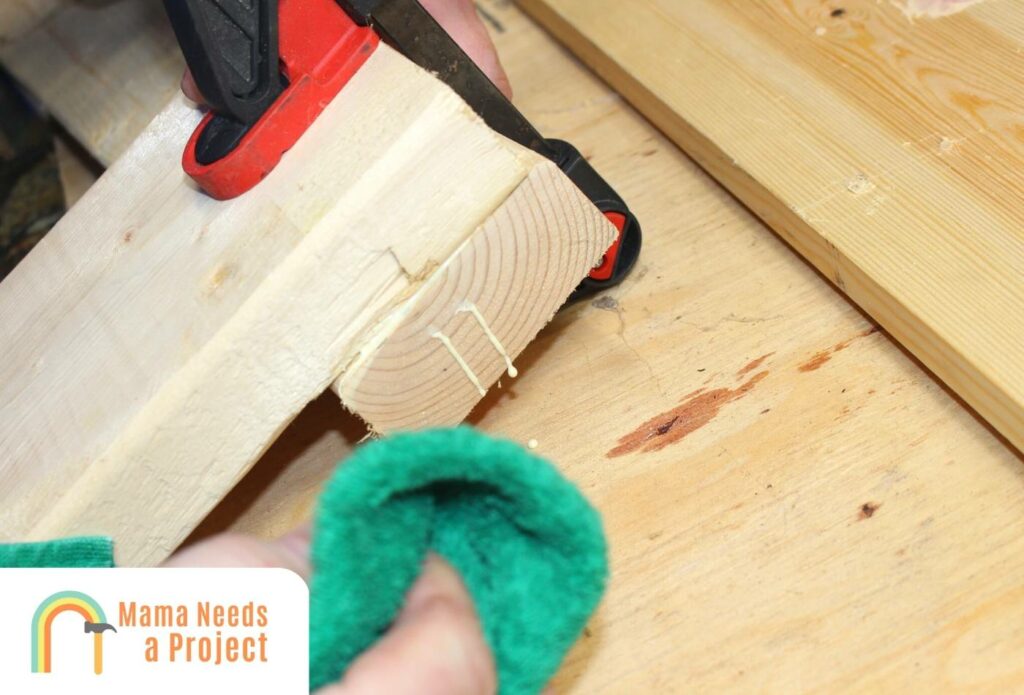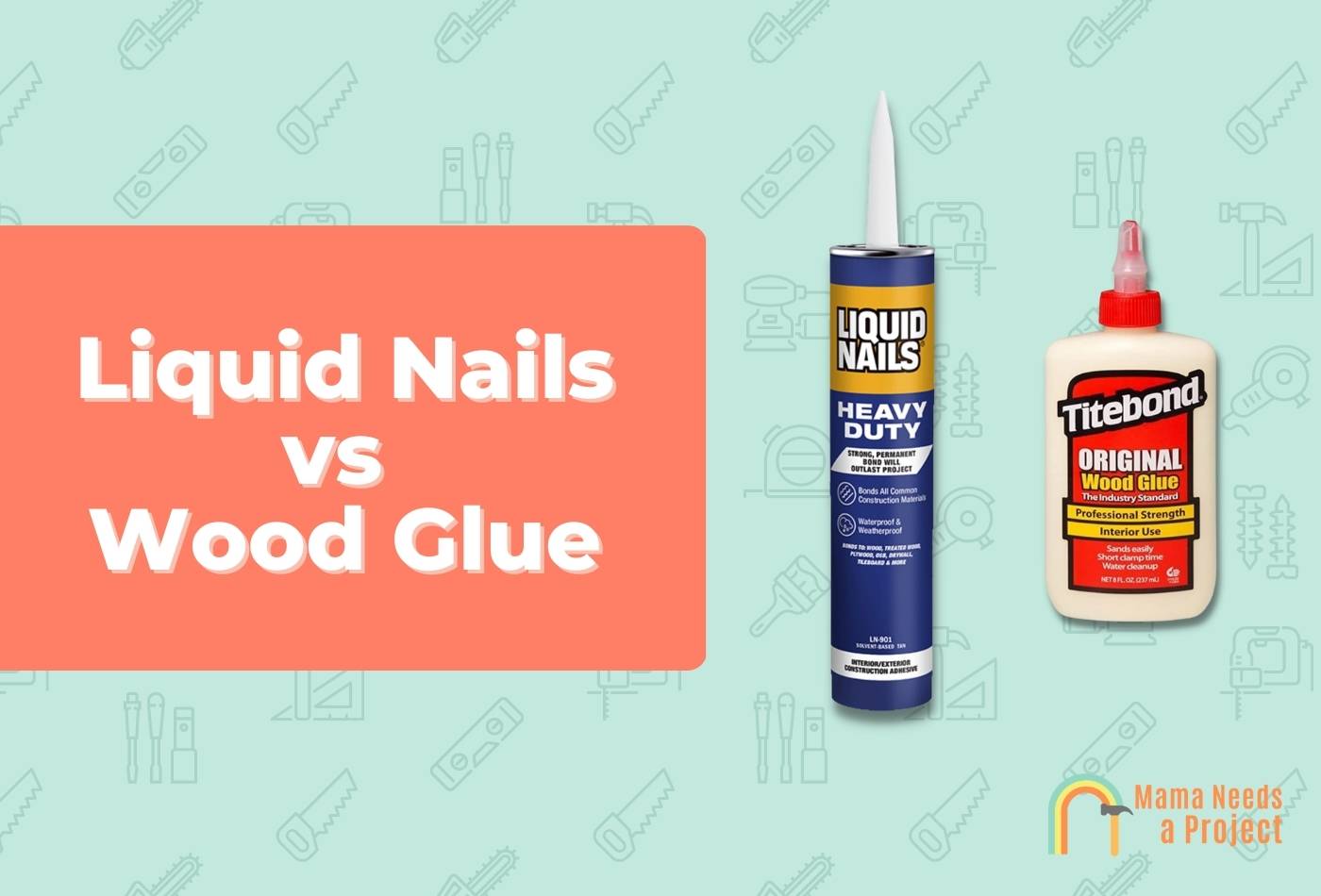Liquid Nails vs Wood Glue: Which is Stronger & Better? (2024)
Liquid nails and wood glues are two common woodworking adhesives, but each are unique and slightly different.
So when should you use each?
In this post, I’ll compare liquid nails vs wood glue, help you decide which is right for your project, and much more. Let’s dig in.
Liquid nails is a stronger, more durable adhesive when compared to wood glue. Additionally it can be applied to a variety of surfaces like wood, cement, concrete, metal, and just about anything else. However, wood glue will dry faster, it’s less toxic, and it’s easier to store and clean up.
Liquid Nails vs Wood Glue

Liquid nails is a popular construction adhesive that’s used to a variety of heavy duty construction projects.
It’s extremely strong and great at bonding different materials together.
Wood glue, on the other hand, is a less strong adhesive that’s used in woodworking projects to create a quick and easy bond between woods.
Strength
When it comes to overall strength and adhesion, Liquid Nails will create a stronger bond than wood glue.
Even the strongest wood glues, like polyurethane glue or an epoxy resin glue won’t be quite as strong as liquid nails.
Because of its chemical makeup, liquid nails has excellent adhesive properties that wood glue cannot match.
So if you’re working on a project that requires the most strength and durability possible, go with a construction adhesive.
Versatility
When it comes to versatility and the items that you can bond together using each product, Liquid nails is the better choice.
Because it’s specifically designed to bond many different types of surfaces together, Liquid Nails gets the pick here.
You can join non porous surfaces to porous surfaces and any other dissimilar surfaces with ease using liquid nails.
It doesn’t matter if you need to bond concrete, wood, metal, or just about any other surface, liquid nails will get the job done.
Cost
Both wood glue and liquid nails are similarly priced, although you’ll need an applicator to use liquid nails – so if you don’t already have one, this is an additional cost.
A basic PVA wood glue will cost under $5.
I’ll give a slight advantage to wood glue in terms of cost, but not by much.
Ease of Use
Wood glue is extremely easy to use. Just flip the bottle up and start pouring it where you want.

Liquid nails, while still relatively easy, has another component you have to mess with – a caulk gun.
If you’re not familiar with using a caulk gun, this can make the process slightly more challenging.
You can also buy liquid nails in a small tube if you don’t want to mess with a caulk gun, but the price per ounce skyrockets if you do this and I’ve found the formula isn’t exactly the same.
I’m giving wood glue the nod here because of how simple it is for anyone to use.
Drying Time
If drying time is a concern, wood glue is the way to go. There are even some fast drying wood glues that can dry in 15 to minutes. However, most wood glues dry in around an hour or two – which is pretty quick.
Liquid nails and other construction adhesives can take over 24 hours to fully dry in some cases.
While there are a few ways to speed up the drying process, wood glue will almost always dry faster than liquid nails glue.
Clean Up
Depending on the type of wood glue you use, cleaning up can be extremely simple. All it takes is a damp rag to remove some wood glues. You should be able to simply peel off the wood glue if you make a mess.

With liquid nails, it’s slightly more complex. Some construction adhesives might need mineral spirits or petroleum jelly in order to remove the substance – which is just one more thing to consider.
If you ever need to remove liquid nails, it’s much more challenging than removing wood glue.
Again, I’m giving the advantage to wood glue because of how easy it is to clean up.
Storage
Storing wood glue is super easy. Just store it in a cool, dry space to extend the shelf like of your wood glue. Just be sure to close the cap once you’re done using it!
Liquid nails is also relatively simple to store, although because it’s in a caulk tube, you can’t easily seal the opening after use.
If you do have a caulk tube version of this adhesive, you should always place a screw or nail in the cap if there is more leftover when you’re done.
If you skip this step, the liquid nails will become harder to apply and won’t work nearly as well.
For this reason, wood glue is the better choice here.
Water Resistance
Between these two adhesives, liquid nails tends to be more water resistant than wood glue. However, you can find some wood glues that are rated for indoor and outdoor use.
Because construction adhesive is meant to be used in a variety of places, it has added water resistance that makes it great for exterior use.
Toxicity
If toxicity is a concern, go with wood glue.
Because of their chemical makeup, liquid nails and other construction adhesives are toxic and should never be ingested. These adhesives can also release toxic fumes when being applied, so be sure you’re using them in a well ventilated room and always wear safety gear when applying. The last thing you want is an emergency hospital visit thanks to the toxic fumes from some construction adhesives.
You can purchase a low VOC (volatile organic compounds) liquid nails if you want to cut down on the toxicity.
Most wood glues are much less toxic and made with wood fibers (but there are some you’ll want to look out for like synthetic glues such as polyurethane). If you opt for animal glues or hide glues, these are not toxic.
Drying Color
The color wood glues dry will depend on the type of wood glue you’re using. You can find glues for various colors so if you need a clear dry, you can find one!
Liquid nails comes in a clear or tan color. You can paint or stain over liquid nails but sanding is hit or miss.
I give wood glue the advantage here because you can find it in many different colors and you can stain and paint it pretty easily.

Pros and Cons of Liquid Nails
Pros
There are a few glaring pros when it comes to liquid nails. The most obvious are its superior strength and adhesion.
If you need an adhesive with maximum bond strength – liquid nails is for you.
Another huge pro is the versatility of liquid nails. This adhesive can be used to bond wood, metal, and so many other materials which can be extremely handy.
Cons
As for the cons, there are a few worth mentioning. First, cleaning up liquid nails can be a pain.
It’s not nearly as simple as wiping it with a damp rag like wood glue. Additionally, because most liquid nails come in a caulk tube, you’ll have to have a caulk gun – and be comfortable using one.
It’s also worth mentioning that liquid nails does requiring more drying time than wood glue, but I don’t consider this factor a “make it or break it” consideration.
Pros and Cons of Wood Glue

Pros
If you’re looking for an easy to use, fast drying adhesive that’s affordable and easy to store – wood glue is a tremendous option.
If you’re looking to glue wood together in your shop, this is the obvious choice.
Cons
The main drawback of wood glue is it’s lack of strength when compared to liquid nails.
Don’t get me wrong, some wood glues are still pretty strong, but just not as strong as liquid nails.
Additionally, wood glue doesn’t work tons of different surfaces like wood glue does. For example, if you want to bond wood to metal, it’s going to be very tough with wood glue.
When Should I Use Liquid Nails?
Liquid nails or other construction adhesives are best used for project that require a strong bond.
If you’re doing heavy duty construction work and need a more permanent bond, liquid nails is the obvious choice.
It’s great for indoor and outdoor applications when you need a strong bond between a variety of surfaces.
If you’re looking to join other surfaces besides wood, liquid nails glue is the better choice.
Finally, if you’re joining materials with a massive gaps and you need something more volumous, construction adhesive is the better choice. Because wood glue dries flat and less dense, it’s not as good at filling gaps.
When Should I Use Wood Glue?
Wood glue should mainly be used for bonding wood together. It’s great for traditional joints and repairing small cracks, but I wouldn’t use it to bond materials other than wood.
Additionally, if you need something to get the job done quickly, wood glue is a better choice because of how fast it dries.
Finally, if you want something that’s less toxic, easier to store, and give you more color options, using wood glue makes sense.
Liquid Nails vs Gorilla Wood Glue
Gorilla wood glue is a PVA glue that’s similar to many other wood glues on the market. If you need a secure bond or you’re looking to bond different materials, go with liquid nails. However, if you’re bonding wood and don’t need an extremely strong bond – Gorilla wood glue will get the job done.
Liquid Nails vs Titebond 3
Titebond III is specifically manufactured with water resistance in mind. While it’s still not as strong as liquid nails adhesives, Titebond III is a good wood glue that can be used for outdoor applications. You’ll avoid the harmful fumes that some heavy duty construction adhesives emit.
Liquid Nails vs Construction Adhesive
You’ve probably heard the terms liquid nails and construction adhesive thrown around a lot by now, but what exactly is the difference?
There isn’t one!
Liquid nails is a brand of construction adhesive that you can buy. Just as there are brands of wood glues, the same is true for construction adhesives.
Final Thoughts
When comparing liquid nails vs wood glue, it really comes down to a few questions. Are you looking for the strongest bond possible? And do you need an adhesive that can bond various materials together? If your answer is yes to these questions, you should go with liquid nails.
However, if you’re just working on a quick project and need to join raw wood surfaces, applying wood glue is the easier option.

